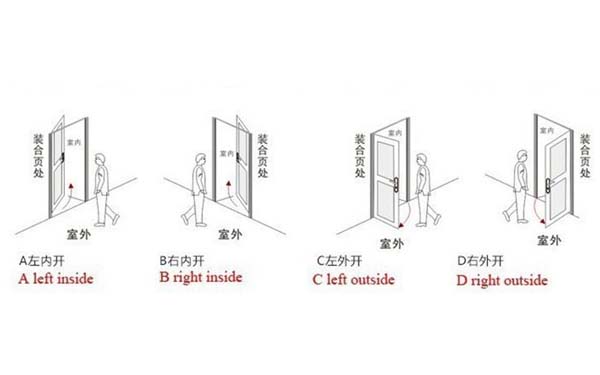Considerations for Installing Fingerprint Locks
 When selecting a fingerprint lock, certain requirements for the door should be considered to ensure proper installation and functionality:
When selecting a fingerprint lock, certain requirements for the door should be considered to ensure proper installation and functionality:1.Door Material: The door material should be compatible with the installation of a fingerprint lock. Most locks are designed for wooden or metal doors, so if the door is made of other materials such as glass or fiberglass, special considerations may be needed.
2.Door Thickness: Check the compatibility of the lock with the thickness of the door. Some locks are adjustable to accommodate varying door thicknesses, while others may have specific requirements.Different locks may have different compatibility ,such as our face door locks may suit for door thickness from 40mm to 110mm and some smaller fingerprint door lock suit for door thickness from 35mm to 50mm ,35mm to 60mm ,35mm to 70mm ,35mm to 110mm ,we have the door locks with European mortise ,those are for slim door like sliding door and metal door .
3.Door Configuration: Consider the type of door configuration, such as whether it swings inwards or outwards, as well as whether it is a single or double door. Ensure that the chosen lock is suitable for the specific door configuration.we provide different handle direction before we ship the locks .the most common chosen handle direction are right push or left push(inwards) .Meanwhile in some situations right or left pull(outwards) are also required .

4.Door Lock Type: Determine whether the door has an existing lock mechanism (e.g., deadbolt, knob/lever lock) and whether the fingerprint door lock can be installed alongside or integrated with the existing lock system.


5.Door Alignment and Stability: The door should be properly aligned and stable to ensure smooth operation of the fingerprint lock. Any issues with door alignment or stability may affect the performance of the lock.
6.Drilling and Installation: Some fingerprint locks require drilling holes in the door for installation. Ensure that the door can be drilled safely and that any existing hardware or mechanisms will not interfere with the installation process.For new doors ,you have more options on the door locks ,but if you do not want to drill holes and want to replace the old door locks by smart fingerprint door locks ,you can contact us for checking the proper mortise which might works for replacing without drilling holes required.Normally we consider the distance between key hole to fixed screw and to door frame .

7.Power Source: Consider the power source required for the fingerprint lock. Some locks operate on batteries, while others may require wiring for power. Ensure that the chosen power source is compatible with the door and installation location.
8.By considering these requirements, you can ensure that the chosen fingerprint lock is compatible with the door and can be installed effectively to provide secure access control.

